
Internal assessments are pretty identical to external assessments as they play a significant role in raising the standards of the learning process.
Assessments have always been considered a systematic way of collecting, reviewing, and using the information to identify existing knowledge gaps and provide a great learning experience.
But how significant are assessments really?
To put this into perspective, assessments help identify the performance of the candidates and uncover their capabilities to achieve long-term goals.
From teachers to employers, everyone needs assessments to validate candidates’ learning and determine their learning curve.
In addition, we also know that assessments are ongoing, cumulative, and constructive, which gives them a ton of flexibility and enough reasons to conduct them on a regular basis. The importance of assessments has grown quite significantly in the past few years, especially in an organizational setting.

In fact, data from IBM suggests that companies that conduct regular assessments offer a much better employee experience. It results in three times the return on assets and almost two times the return on sales.
There is no doubt that assessments are an integral part of an organization’s strategic plan, be it institutional or corporate.
This blog will closely look at what an internal assessment is, internal assessment methods, advantages, tips to conduct internal assessment, and the main differences between internal assessments and external assessments.
First, let’s start with the basics.
What is an Internal Assessment?
As the name suggests, internal assessments are those carried out within the organization or an institution and are also graded by them without involving any external parties.
The purpose of internal assessment is to judge a candidate’s credibility and knowledge concerning a particular subject or a discipline.
These assessments play an important role in every organization’s hiring process. They help the HR personnel assess the abilities, skills, and psychological balance of every potential candidate to find the right fit for the organization.
But that’s not all.
Companies save thousands of dollars every year by conducting internal assessments and avoiding bad hires that can end up costing them big time.

The good thing about internal assessments is that they can easily be created using an online quiz making tool. Such tools support automatic grading and reporting, which simplifies the process of conducting assessments. In addition to that, these provide a range of security measures to prevent cheating and ensure fairness in assessments.
Here are some examples of internal assessment:
- Logical Reasoning Assessment
- Salesforce Skills Assessment
- Communication Skills Assessment
- Accountant Skills Assessment
- Performance Management Skills Assessment
Related Read– To learn more about different types of assessments, have a look at 7 Different Types of Assessments You Should Know About
What is an External Assessment?
External assessment is a method of assessing candidates where the tests are created and developed by an examination body or an institution that is based outside of the candidate’s institution or organization.
External assessments are primarily conducted to ensure that the candidate possesses all the required knowledge and skills by meeting the performance standards set by an external committee.
Standardized testing is the primary element in these types of assessments, and the certification from these assessments can help candidates pursue further education or apply for relevant jobs.
The evaluation of external assessments is always carried out by third parties or stakeholders involved with the body.
This never changes.
One of the key reasons why some assessments are conducted externally is that they take a neutral standpoint while preparing the questions and during the evaluation process.
However, an external assessor might lack the involvement or cohesiveness necessary to understand the internal workings of an organization, which can sabotage the performance and evaluation of tests.
Internal Assessment vs External Assessment
The main difference between internal and external assessments is that internal assessments involve a process of assigning the assessment test to the candidate internally. It can either be done by inviting them to attend the test or sending it to them via a link. In contrast, external assessments involve contracting an outside examination body to carry out an assessment.
Even though their primary function is to conduct assessment tests, they are quite the opposite.
Apart from these obvious differences between internal and external assessments, there are some more important ones as well.
Let’s take a good look at some of the most prominent differences between these assessment types:.
| Internal Assessment | External Assessment |
|---|---|
| Internal assessments are always carried out by the departments of the organization. | External assessments are carried out by external bodies unrelated to the organization. |
| Internal evaluations are extremely cost effective. | External evaluations get a little expensive at times. |
| Internal assessments are all integrated into the process of the organization. | External evaluators rarely know what goes on in an organizational setting. |
| Internal assessments are mostly automated and always conducted by trained personnel. | It can be difficult to determine the level of competence of external evaluators. |
| Immediate technical assistance can be provided when assessing internally. | The support given to candidates might be a little delayed. |
Now that we know some of the subtle differences between internal and external evaluations, let’s move ahead and look at the importance of internal assessments.
Importance of Internal Assessments
For business owners, conducting assessments is as important as any other factor that helps ensure a smooth and seamless workflow.
Internal assessments are not just carried out during the hiring and onboarding process but also as a mode of performance evaluation on a regular basis.
Hiring the right candidate is important, but ensuring that they perform at their maximum capacity is equally important. Here’s how internal assessments can be important.
1. Identify Strengths and Weaknesses
Internal evaluations effectively measure the quality and quantity of job performance and provide feedback to the employee.
This feedback is extremely crucial for an employee’s self-development because they can learn about their strengths and weaknesses as perceived by others and measured by the assessments.

Then the employees can participate in self-development programs and take corrective actions to work on their weaknesses.
It also helps employers match employees with more relevant job projects and assignments.
2. Training and Development
The stepping stone to determining the training and development needs of the employees is assessing the strengths and weaknesses of the employees.
Once the strengths and weaknesses have been identified, the internal assessment will point out the type of training needed by the employees based on the areas in which they did not perform well.
For training needs analysis, the assessments also uncover crucial insights about the development programs that can benefit both employers and employees.

For instance, you can give Sales training to employees who did not score well in the Sales Skill Assessment tests and find it difficult to close sales funnels. You can even create blogs and documentation to make training easier and more accessible.
Related Read– To learn more about training and development, have a look at What is an Internal Training Program?
3. Setting Performance Goals and Standards
Every internal evaluation has performance goals and standards that employees should meet as per the employer’s expectations.

Assessments help employers identify employees who are meeting the expectations and the ones that are falling short of them. Once the identification is made, the employers can provide all the necessary tools to ramp up their performance.
4. Reward and Recognition
Arguably the best way of boosting employee morale and performance is by recognizing and rewarding employees for their contributions.
Internal assessments allow employers to evaluate the performance of employees and recognize them for their hard work and commitment.

In addition to the monetary rewards, employers can also identify high-performing employees and assign them additional roles and responsibilities.
However, not everyone gets motivated with the same rule. So, you should employ different methods. For example, you can gift pastable Canvas Picture Prints
to your employees. You could choose their peer group pictures or create a canvas highlighting their professional achievements. These will act as motivators for them.
5. Positive Reinforcement
Positively reinforcing your employees is also quite similar to recognizing their hard work and rewarding them.

Internal evaluations will help you identify the efforts put in by your employees, and you can radiate some positive energy towards them for executing tasks successfully. Studies also show that positive reinforcement also motivates the employees and boosts workplace morale in the long run.
Now that you have gone through the importance of internal assessments, let’s move ahead and look at some of the methods for conducting internal assessments.
Top 5 Internal Assessment Methods
There are plenty of methods using which you can conduct internal assessments, and every method takes a different approach for evaluating the competency of the candidates.
Here are the five internal assessment tools or methods:
1. Skills Inventory
A skills inventory is also known as a skills database. As the name suggests, it refers to a database that is maintained by the organization, which includes all the skills, job competencies, and characteristics of the employees.

Organizations use this database to get an accurate overview of the company’s pool of current skills and also to identify if the present skillset is enough to achieve the long-term organizational goals.
2. Mentoring
Mentoring is another one of many popular internal assessment systems where a more experienced employee is assigned as a mentor to a junior employee to promote career development for both of them.

The mentor assesses their mentee, and based on the results, they provide guidance and direction towards professional and personal development.
3. Performance Review
Performance review is conducted by the employee’s manager or supervisor, mostly at the end of each year and sometimes even mid year, with the aim to provide performance feedback to the employee.

There are multiple types of performance reviews, including:
- Top down employee assessment
- Upward feedback leader assessment
- Self assessment
- Team assessment
The managers observe and assess employees for a complete year, and when the year ends, they provide feedback on their overall performance and contribution to the company.
4. Multisource Assessment
Multisource assessments are also called 360-degree assessments, and it involves a supervisor, along with other subordinates and colleagues who are familiar with the employee’s job, to assess them.

This internal assessment system helps you get multiple perspectives of an employee and uncovers how different people of the organization perceive that employee’s presence.
5. Assessment Center
An assessment center is another way of assessing an employee’s competencies and skills internally by putting them through a series of simulations and tests that mimic the challenges of the job they apply for.
This is a little more complex way of assessing the candidates but also quite effective when it comes to testing the suitability of the employees for a specific job role.
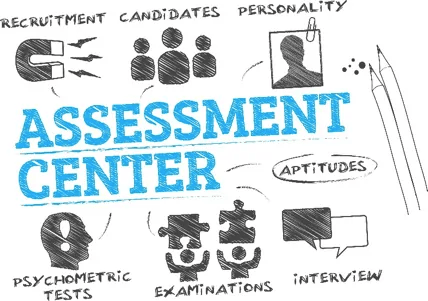
Those are the different methods of conducting internal assessments. Now it’s time to look at how internal assessments can be advantageous to different parties.
Related Read– If you would like to explore some of the best online assessment tools, have a quick look at 10 Best Online Assessment Tools for 2023
Advantages of Internal Assessment
Internal assessments are used not just to hire the right candidates for the job but also to evaluate their performance and give out performance appraisals.
By conducting these assessments, businesses get a much clearer picture of their manpower and the efforts that they will require to achieve long-term business goals.
Here are some of the advantages:
1. Performance Improvement
Internal assessment tests are not just aimed at gauging the performance of employees but also improving it. Assessments factor in all the crucial elements like social process and technology to analyze and evaluate opportunities.
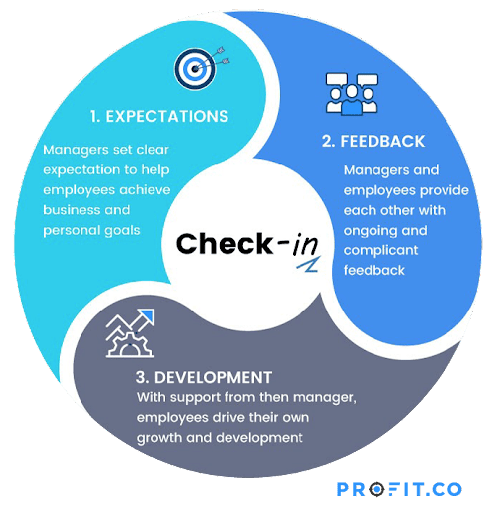
Supervisors can also use these assessments to help employees understand their job better by creating the assessments in such a way that they mimic on-the-job scenarios, which helps employees perform better.
Quiz Maker is one such employee assessment tool that employers can use to create customized assessment tests that replicate on-the-job scenarios for a more realistic evaluation process.
It offers more than 100 professionally designed templates and over 100,000 questions to make assessment creation more flexible and seamless. It even offers tons of security features that prevent cheating and unauthorized access to ensure fairness in assessments.
2. Screening Top Performers
You can use internal assessments to evaluate the performance of employees and then screen out the organization’s top performers. This is done because there are always employees who go above and beyond to make a difference.
Screening the best performers will enable you to recognize and reward those employees and keep them motivated to perform better.
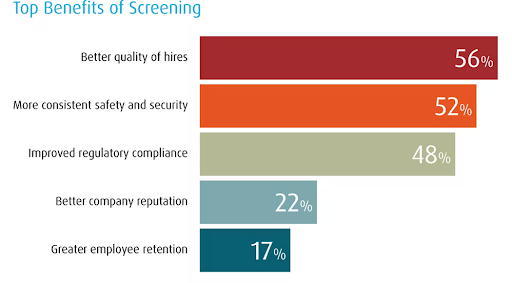
3. Align the Right Candidates With the Job
Assessments are essential in making sure that employees perform the job based on their skillset.

These assessments uncover a lot of different insights about employees, such as effectiveness, role-specific preferences, motivating factors, and strength and weak areas.
Employers can then use these insights to find a role that aligns perfectly with their employees’ skill sets and also works in favor of their strengths.
4. Bolster Face-to-Face Interviews
Face-to-face interviews paint a really good picture of candidates and provide a solid impression of them to the interviewer.
But do interviews tell you everything about a candidate?
No, because someone can be really good at communicating during the interview and still perform terribly in all other job-related activities or vice versa. This is why internal assessments help interviewers get an overall picture of the candidates by assessing them in all domains and avoid bad hires by relying solely on the interviews.
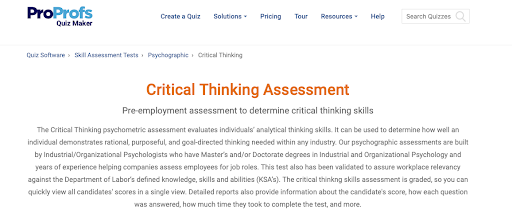
For instance, psychographic tests like Critical Thinking Assessment can be used alongside face-to-face interviews to ensure that the candidate is not just a good communicator but also a good problem solver.
5. Personalize Onboarding Process
Successful onboarding helps new employees get a hold of things more quickly and even improves retention rates in the long run. Onboarding involves a lot of different elements, and assessments should be one of the most tools for it.
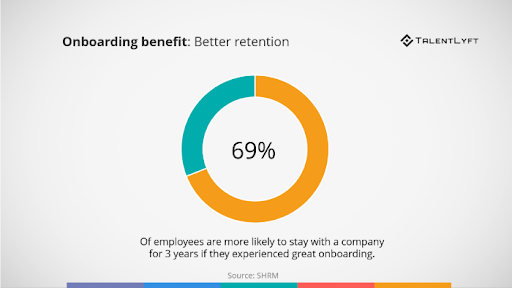
You can gather all the insights about a candidate from the hiring process and use those insights to customize the onboarding process by adjusting your approach through different learning styles and modules.
This will help you easily determine the strengths and weaknesses of the candidates, along with setting goals based on different work styles.
6. Improve Training Programs
Internal assessment tests and performance evaluations will also uncover why some of your employees are not performing well and falling short of the expectations. This case is often due to insufficient or poor quality of training.
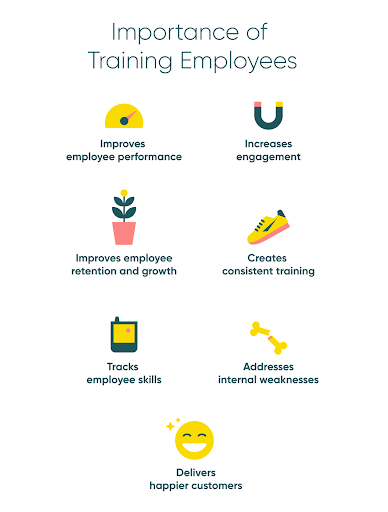
Once you uncover the areas where employees are not performing well, new training modules can be developed that focus on those areas and improve their performance and self-esteem. Neglecting proper employee training can create major bottlenecks in achieving organizational goals.
Here, employee assessment tests can be conducted to test their skills and knowledge. Employers can create customized training modules based on the results to help employees improve their skills.
This doesn’t end here because internal assessments offer tons of other advantages. Moving forward, let’s go through some useful tips that will help you conduct internal assessments with ease.
Looking for an online quiz maker and assessment tool?
Get Started With ProProfs Quiz Maker
Tips to Conduct Internal Assessments
Effective assessments are possible only when the process of collecting and analyzing information is done in such a way that it yields favorable results. No assessment program is perfect, but you can take certain steps to maximize the effectiveness of those assessments.
Here are some tips for you to conduct internal assessments:
1.Online Assessments Are the Key
Modernizing your exam approach is one of the best things you can do to conduct internal assessments. Online assessments are welcomed not just by candidates but also by organizations because of their simplicity.
These assessments are also quite flexible because there are no geographical boundaries, and candidates can take the exams from anywhere they want.
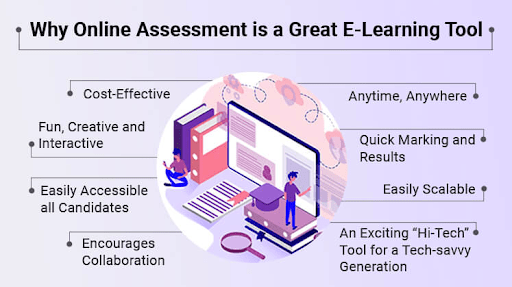
However, this does not mean that the integrity of traditional physical examsis compromised. They are extremely secure and offer a level playing field to all candidates.
In addition, the modernization also helps speed up the process and guarantee almost 100% accuracy in evaluation, which comes as a result of automation and the AI engine working in the background. There’s also the option of adding activation functions to the neural network which helps the AI model use the complex data more effectively.
A tool like ProProfs Quiz Maker is perfect for this kind of task. It offers tons of built-in assessment templates with 100+ customizations, making assessment creation easy and flexible at the same time. Also, the automatic grading and reporting system make a quick work of the analysis and eliminates any bias.
2. Communicate Effectively
Research shows that candidates perform much better when the goals and objectives of an assessment are laid out clearly.
Let everyone know when the assessments are going to be conducted and what those assessments will measure. Communicate it to your candidates or employees so that they get enough time to prepare for them.
A lucid understanding of what the assessments can be about and the expected outcomes from the assessment takers will help assessment creators bring out the intelligent side and ensure that there is no untapped potential.
3. Set Ambitious Goals
Assessment goals should cover both broad and specific areas of the evaluation process. It would help organizations create individuals with professional, technical, and practical skills and make them socially responsible.
Ambitious goals will help organizations hire the best of the bunch and ensure that their workforce is equipped with all the necessary skills and knowledge.

You should publicly announce these goals to all the stakeholders, which would help send out a positive message and positively reinforce the employees.
Finally, the departments should strive to keep the organizational goals in mind and create individual courses and assessments to direct the employees in fulfilling the organization’s ambitions.
4. Let People Review Assessments
Assessments cannot be created in isolation. While creating assessments, you need to ensure that the tools and metrics used in the assessment are valid and reliable.
Your assessments might completely miss the mark and fail to measure candidates on important criteria without proper review.
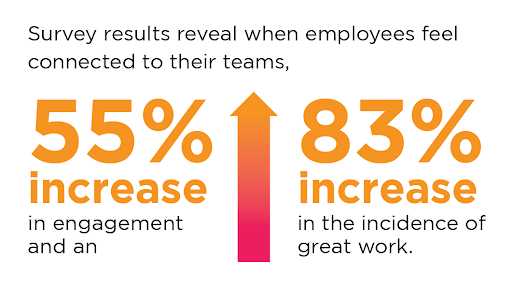
For this, you can invite a group of people, including your peers, subordinates, and supervisors, who can give you multiple perspectives on your assessments and help you determine whether your assessments are truly measuring what they are supposed to.
5. Consistency is Essential
Conducting internal assessment tests is great, but conducting them at regular intervals is even better. Assessments are not just limited to hiring the right people; they are also quite crucial when it comes to evaluating their knowledge and performance.
This is why organizations should put policies and procedures in place to define how frequently the assessments will be conducted.
Conducting assessments twice or thrice a year will help organizations stay up to speed with the latest developments with their employees. It will also be beneficial in setting and updating long-term institutional goals based on the data collected.
Also, you should take contextual factors like demographics and other characteristics into consideration for a better understanding of the results.
These are some of the most common and effective tips that you can easily get started with. Now let’s get down to business and learn how to create an online assessment.
How to Create Online Assessments
To create an online assessment, you will need an online assessment creator that can create and share online assessments with test takers.
Here, we are going to use ProProfs Quiz Maker as an example to create our assessment because it is one of the simplest and the most easily accessible online tools out there.
There are two ways of creating an assessment through ProProfs Quiz Maker:
- Create assessments using templates
- Create assessments from scratch
1. Create Assessment Using Templates
This is the simplest and the quickest way of creating assessments because all you have to do is pick up a suitable template and make necessary changes, and you’re good to go.
Step 1- Go to the dashboard and click “Create a quiz“
Step 2- In the next window, you get an option to choose between a “scored” or “personality” quiz. Click the “scored” quiz option to proceed.

Step 3- In the next window, click “Assessment library” from the template section, choose the most suitable one from the given categories, and click “view.”
Step 4- The assessment window will now open. Click “Use this assessment” to get started with it.
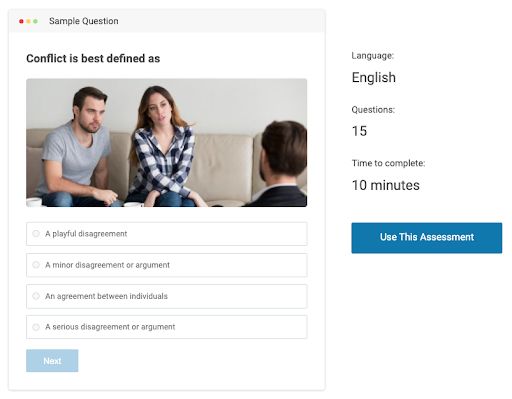
Step 5- After clicking, edit your assessment questions and the overall layout however you want, and then click “Save.” Your assessment will automatically be saved on your dashboard.
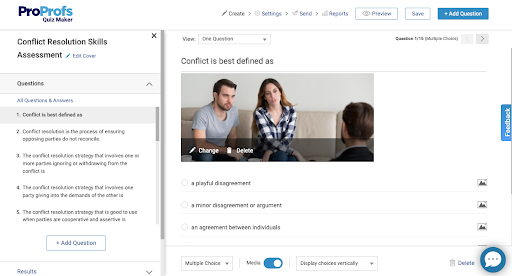
2. Create Assessment Using Templates
The second method of creating assessments is from scratch. This process might be a little detailed and time-consuming, but it sure is fun, even more so if you know what you’re doing.
Step 1- Go to the dashboard and click “Create a quiz“
Step 2- In the next window, you get an option to choose between a “scored” or “personality” quiz. Click the “scored” quiz option to proceed.
Step 3- When the template window appears, click “Create from scratch.”

Step 4- This leads to thequiz editor, and you can start by selecting the question types, adding questions, and customizing the layout.
Step 5- Add automatic grading and scoring.
Step 6- Configure the assessment setting.
Creating assessments is simple when you’re using the right tool, and if you have a knack for creativity, the assessments you create can be a lot more appealing.
Now that you know how to create assessments, let’s finally look at how to choose the best assessment tool.
Watch: How to Create an Assessment Online
Without an online assessment tool, you won’t be able to get started. This is why you need to ensure that your assessment tool is capable enough to perform all the functions and create incredible assessments.
Here are some of the attributes you should consider while looking for an assessment tool:
1. The Platform Should Be Easy to Use
Your online assessment platform can have a thousand features, but if you can’t understand or use them easily, there’s no point in having all those features.
This is why an assessment tool should always be easy to understand and use for both assessment creators and candidates.
When your assessment tool is able to cater to all your assessment needs without being complicated, your candidates can focus on the test instead of trying to understand the software.
2. Easy Question Creating Abilities
Another extremely important feature of any assessment tool is the ability to create a diverse range of simple and complex questions for the purpose of evaluation. The questions can be anything from MCQ, essay type, fill in the blanks to, subjective, objective, and more.
A built-in question bank and ready-to-use templates are also among some of the most basic features that every assessment tool should offer to help create questions easily.
3. Automatic Analysis and Reporting System
Attempting assessments is not the end of the process; it’s just the beginning of a long one.
Every assessment tool should comie wth a built-in analysis and reporting tool that can automatically assess the tests, assign scores, and present them in a structured report format.
This feature is necessary because it saves a ton of time, and it also eliminates any chances of errors or bias that can seep in during manual analysis. An automated reporting tool will instantly give a holistic view of the candidates.
4. Remote Proctoring and Security Features
Every assessment tool should come with remote proctoring and other security features to ensure the exam’s integrity and provide a level playing field.
Remote proctoring helps invigilators ensure that candidates do not use unfair means. Security features like disabling tab switching, setting password accessibility, and timer per question prevents them from cheating or getting an unfair advantage over others.
5. Strong Support Team
Every technical product has a slight learning curve, and they are all prone to technical malfunctions that users cannot normally resolve on their own.
This is why an online assessment tool should always have strong and prompt customer support behind it so that candidates or invigilators do not have to face any delays.
Watch: How to Choose the Best Assessment Software
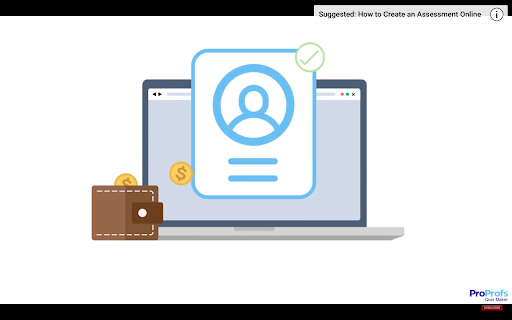
One Solution for All Your Assessment Problems
To sum things up, assessments are a must for employee hiring and training evaluations. Just remember to align your internal and external evaluations to find the perfect candidate for your organization and train them properly by understajding their knowledge gaps.
Now that you have the key to conducting assessments successfully, all you have to do is pick the right assessment tool and get started.
Do you want free Quiz Software?
We have the #1 Online Quiz Maker Software for complete learning & assessment




